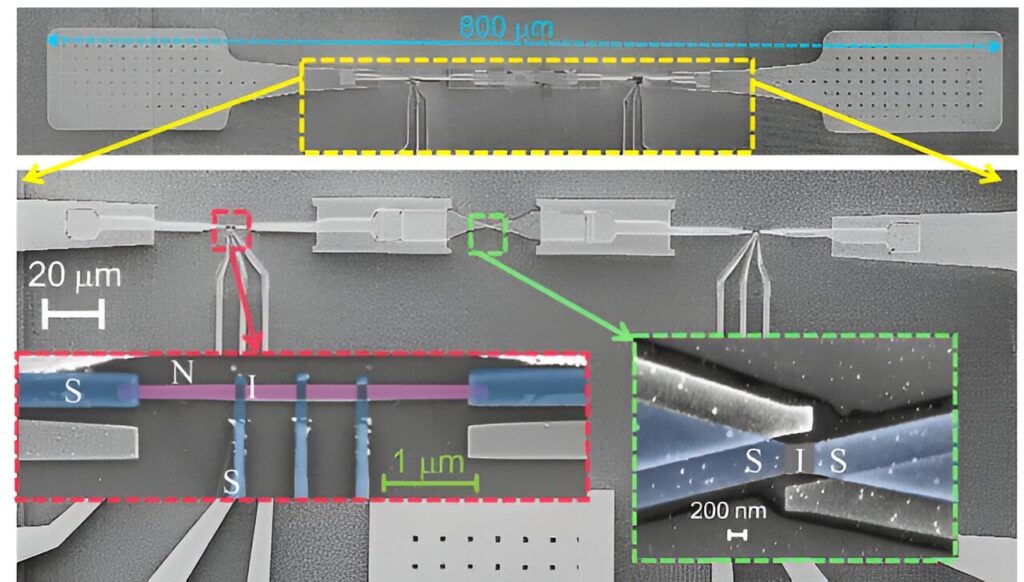Physicists from Aalto University in Finland, alongside an international team of collaborators, have theoretically and experimentally shown that superconducting qubit coherence loss can be directly measured as thermal dissipation in the electrical circuit holding the qubit.
The theoretical work of the group was accomplished in partnership with colleagues from the University of Madrid. The research was published in Nature Nanotechnology.
At the heart of the most advanced quantum computers and ultrasensitive detectors are superconducting Josephson junctions, the basic elements of qubits––or quantum bits. As the name suggests, these qubits and their circuitry are very efficient conductors of electricity.
“Despite the fast progress of making high-quality qubits, there has remained an important unresolved question: how and where does thermal dissipation occur?” says Bayan Karimi, a postdoctoral researcher in the Pico research group at Aalto University and the first author of the study.
“We have developed for a long time the methods for measuring this loss based on our group’s expertise in quantum thermodynamics,” adds Jukka Pekola, the Aalto University professor who heads the Pico research group.
As physicists continue to push for ever more efficient qubits in the race to hone the technology surrounding quantum devices, these new data allow researchers to better understand how their qubits decay. In terms of quantum computing, qubits with longer coherence times allow for more operations, leading to more complex calculations unachievable in classical computing environments.

Warmth in the air
The transmission of supercurrents is made possible by the Josephson effect, where two closely spaced superconducting materials can support a current with no applied voltage. As a result of the study, previously unattributed energy loss can be traced to thermal radiation originating at the qubits and propagating down the leads.
Think of a campfire warming someone at the beach––the ambient air stays cold, but the person still feels the warmth radiating from the fire. Karimi says this same type of radiation leads to dissipation in the qubit.
This loss has been noted before by physicists who have conducted experiments on large arrays of hundreds of Josephson junctions placed in circuit. Like a game of telephone, one of these junctions would seem to destabilize the rest further down the line.
Originally formulating their experiments with these many junctions in an array, Karimi, Pekola, and the team started tracing their way backwards to more and more simple experiments. Their final experimental setup: observing the effects of tweaking the voltage at a single Josephson junction.
By placing an ultrasensitive thermal absorber next to this junction, they were able to passively measure the very weak radiation emitted from this junction at each phase transition in a broad range of frequencies up to 100 gigahertz.
The work was done in collaboration with the InstituteQ Chair of Excellence professor Charles Marcus of the University of Washington, in the U.S., and Niels Bohr Institute in Copenhagen, Denmark. The fabrication of the devices used in the experiments utilized the cleanrooms of OtaNano, Finland’s national research infrastructure for micro- and nanotechnologies.


